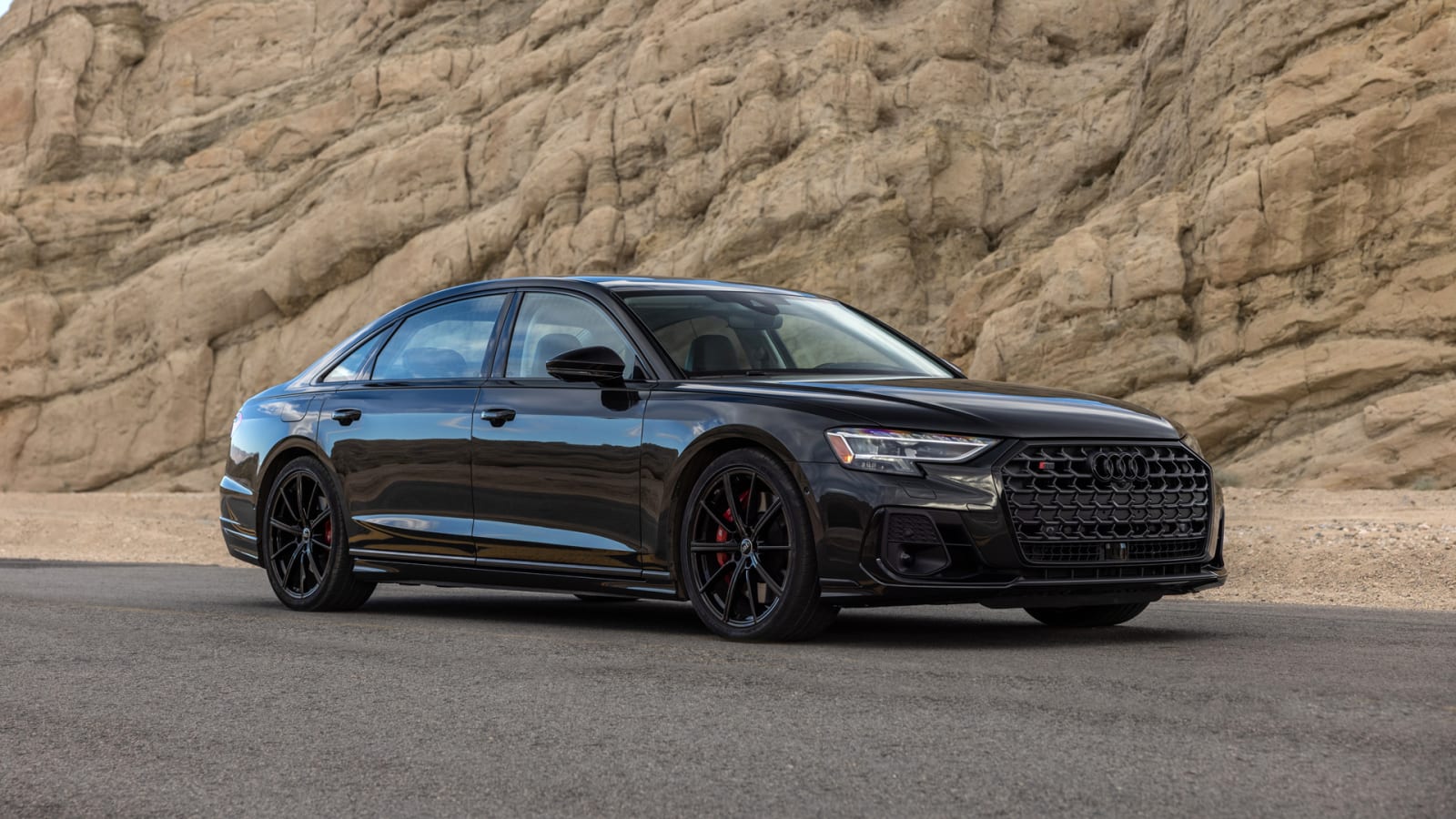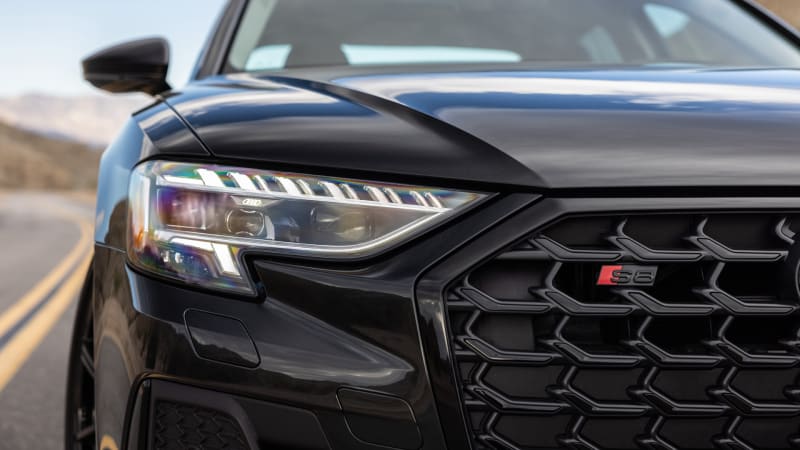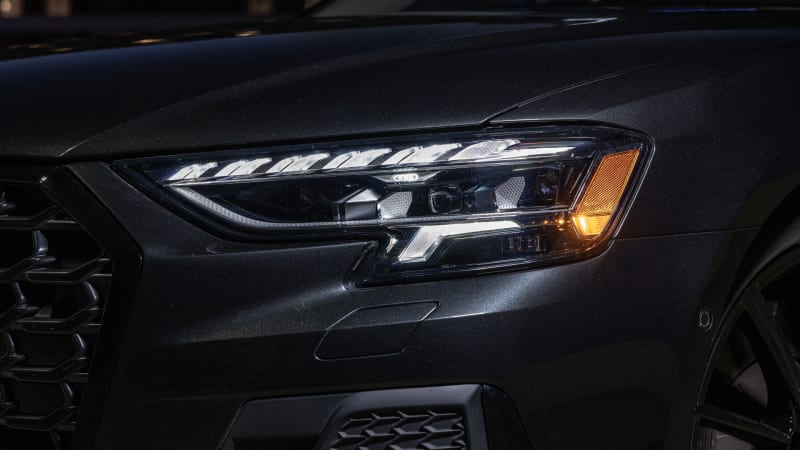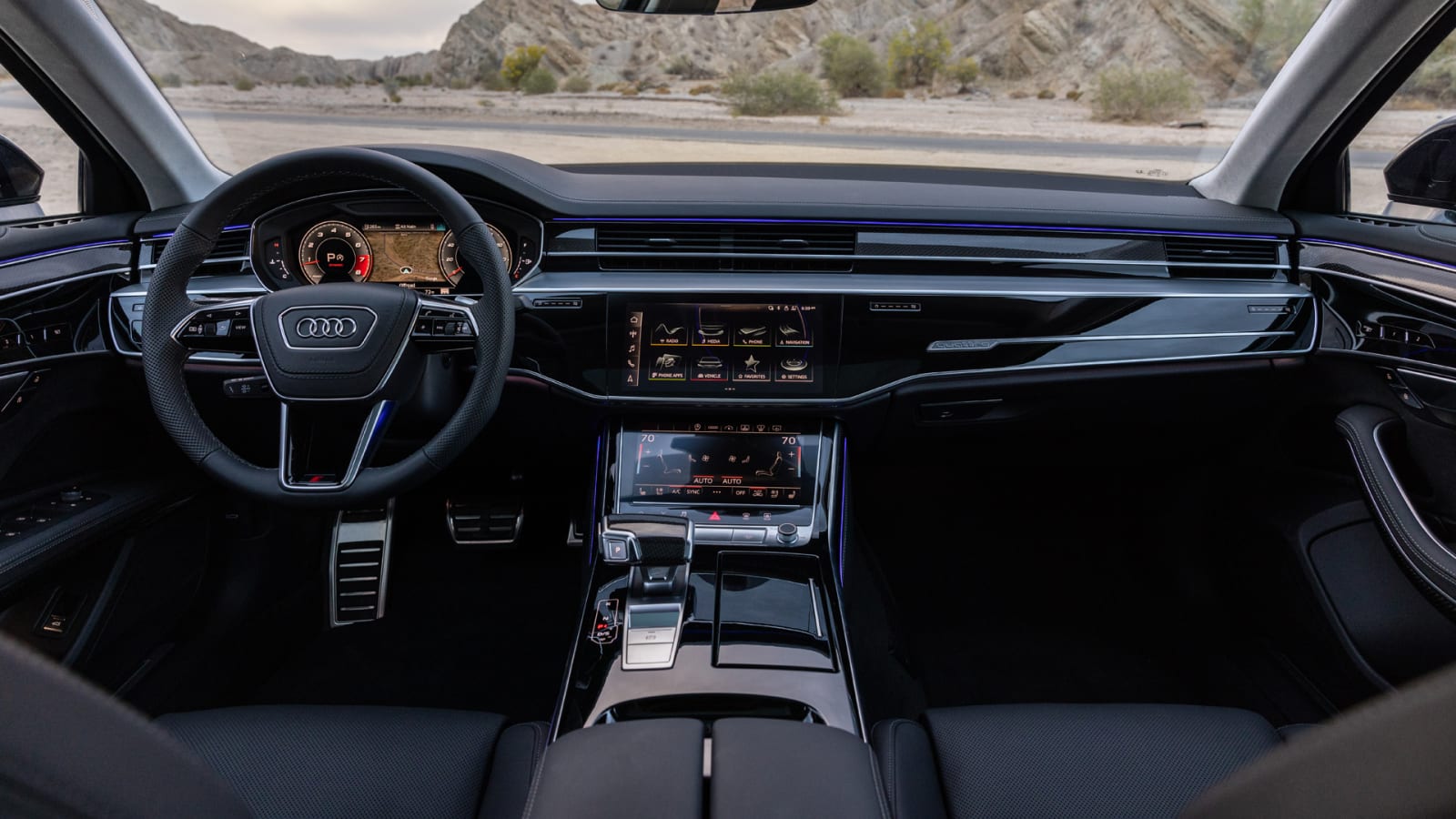OCEANSIDE, Calif. — Though freshly updated, the 2022 Audi S8 actually has not been changed much. Its exterior has been nicely freshened, it has some fancy new lights, and there’s a couple of new colors in the palette. What has changed, though, since the D5-generation A8/S8 debuted for 2019, is just how rapidly the industry’s transition to electrification has progressed.
Since we last reviewed the then-new S8, Audi has announced the end of its top-end sports car, the end of internal combustion engine development, and parent company Volkswagen has declared the manual transmission officially dead. You didn’t have to be clairvoyant to see this coming, but here in 2022, the end of the traditional car as we know it feels a lot closer than it did back then. As such, the ever-present sense that this S8 would be the last Audi of its kind loomed over our test drive.
Since you asked, that “kind” is the big German sleeper sedan, a category Audi arguably ignited in 1996 with the D2 S8. The W140 S-Class Benz and E38 BMW 7 Series may have had similar output from V8s – or bigger V12s, even — but their performance credentials hardly extended beyond the engine bay. There was no AMG S-Class, and even the generally athletic 7 of that time didn’t extend as far into the performance realm as the S8. Besides its stiffened and lowered sport-tuned suspension, it was a technological powerhouse with its Quattro AWD system, aluminum spaceframe construction and recalibrated Tiptronic gearbox. It even had a solar sunroof to keep the climate control going when parked.
These days, the Merc and Bimmer have caught up in terms of tech, in the same way Audi has caught up to them in terms of badge snob credibility. AWD and aluminum bodywork are no longer exclusive to any one marque, nor are high-performance variants. Somehow, though, the Audi S8 feels truest to its original mission.
It has the most understated lines in the segment, which is proper for a large executive limousine with the moves of a much smaller sports sedan. The Mercedes looks almost too slippery, and who knows what’s going on at BMW’s studios these days. The S8 splits the correct difference between sleek and chiseled.
A redesigned — and yes, larger — grille thins out the chrome for a more high-tech look. Its L-shaped inlays do a much better job of adorning the twin-turbo 4.0-liter V8 than the 2020 model’s horizontal-barred HVAC-like vent. Brightwork throughout the car is made more delicate, a look that makes last year’s look instantly dated. Or, you could go with the Black Optics package as on our test car and remove any trace of glossiness whatsoever.
New headlights receive segmented accent lights and standard HD matrix lighting. An optional Digital Matrix Lighting system uses 1.3 million micro-mirrors each measuring less than a 10th of a millimeter that Audi says can adjust 5,000 times a second for precise adaptive dispersal of photons. It should be noted, however, that some of these functions are not yet available for on-road use in the United States, legal as they may now be.
At the rear, a wider lower skirt gives the car a more powerful stance and frames the quad pipes, which serve as the main giveaway that this is no mere A8. New OLED taillights repeat the segmented lighting signature from the front and emit a different pattern when the car is placed into Dynamic mode, should you want to signal intentions to a night-time highway rival.
Speaking of modes, the S8 has something of a split personality. In Comfort, it wafts along with the oceanic bob of a Coupe de Ville, while leaving occupants unperturbed by outside noise. An insanely intricate active air suspension employs the mild hybrid’s 48-volt electrical system to raise and lower different sides of the car by up to 3 inches. It’s quick enough to hurl either side to the max in half a second if it detects an impending impact.
When not flinching, it lifts to keep the car level over road irregularities. Like high-end Mercedes and various Genesis models, a camera senses undulations in the road ahead and adjusts the suspension to compensate. It even rises to ease ingress and egress. Speed bumps are reduced to Botts Dots and uneven asphalt disappears into thin air.
And yet, when you flick it into Dynamic mode upon finding a winding mountain road, the 17.5-foot, 5,126-pound behemoth seems to shrink to the size of an A4. Thanks to loads upon loads of elaborate technology, suddenly you’re carving canyons like Skipp Sudduth chasing down a handcuffed briefcase (what, you thought we’d get through an entire S8 review without referencing “Ronin”?). The active suspension and sway bars work overtime to keep the car level. The torque-vectoring rear diff and AWD system keep a titanic 563 horsepower and 590 pound-feet flowing to the right corners. Standard four-wheel steering dials the rear wheels opposite to the fronts in tight corners, so much so that you can feel the car pirouetting like the world’s huskiest ballerina.
Through sheer force of technology, the S8 feels more planted and confidence-inspiring on switchbacks and hairpins than even the much smaller and nimbler A3. Like other four-wheel-steering systems, this one also helps keep the car planted at speed on highways as well, edging the rear wheels in the same direction as the fronts for stability. And despite its heft, the big red calipers fixed to larger front brakes (15.8 inches versus the A8’s 14.8) repeatedly brush off excess velocity without drama.
All the while, you’re sitting in a cockpit of great comfort. The seats feel great, the materials are appropriately top notch, and to these eyes, the design is superior to those of its German rivals. It’s far less busy than the gaudy S-Class and Audi has managed to integrate its screens into the console unlike the BMW 7 Series.
Unfortunately, they’re the standard dual touchscreen setup Audi’s been using since 2019. The system responds faster than the old one, but no matter how responsive it is and how much haptic feedback it provides, it’s still impossible to use without taking your eyes off the road for longer than is ideal. Even the drive mode selector and hazard lights are operated via a flush panel where several presses are required to get what should be one-touch ”buttons” to do what you expect. We much prefer the e-Tron GT’s center stack, which at least has some physical switchgear.
That is the issue at the crux of the S8. It’s supremely capable, but it can only do what it does because there’s an army of sensors emitting more invisible waves than Three Mile Island. Tricks like hideaway vents and eye-rollingly ostentatious “welcome ceremony” animation are novel initially but unnecessary after a few turns. We shudder to think of the repair bills that might come with all this complexity. Which is actually something that’s been leveled at the S8 since its earliest days, but that car is positively quaint compared to its 2022 descendant.
If you can look past these concerns, and perhaps those plunking down $130,000 for a car can, the S8 is a rewarding drive. It’s a worthy successor to that D2 S8, and almost certainly the last … well, at least as we’d recognize it.
Related Video:
Source: www.autoblog.com






